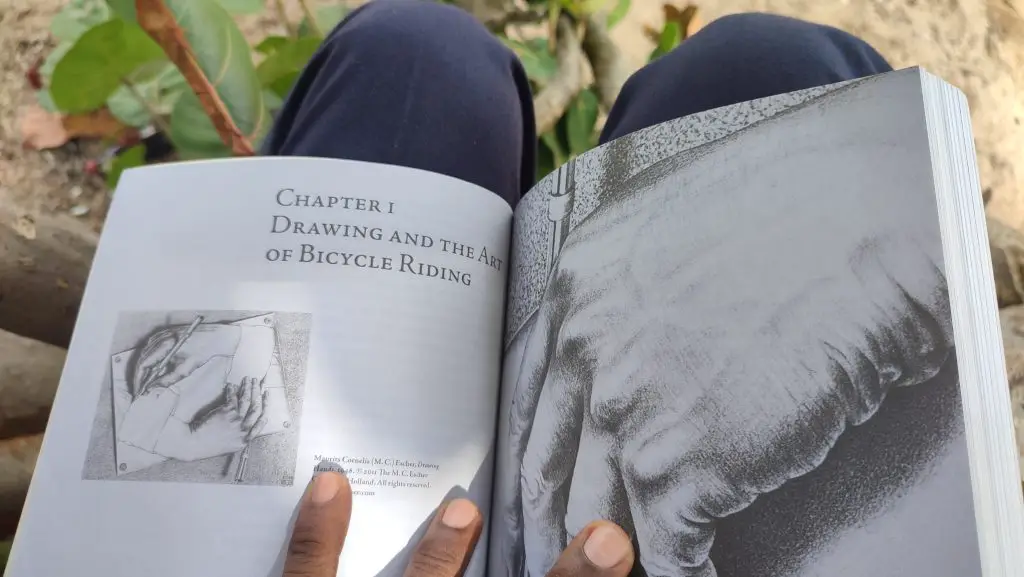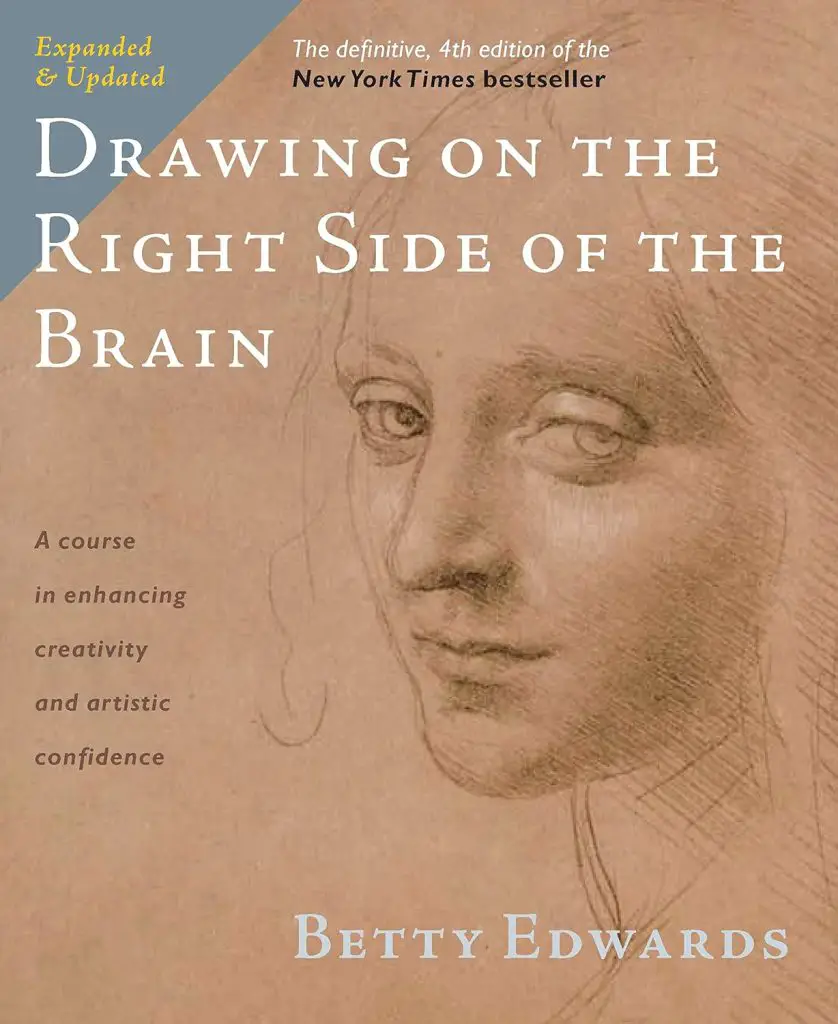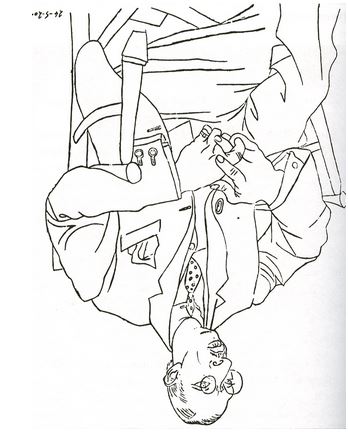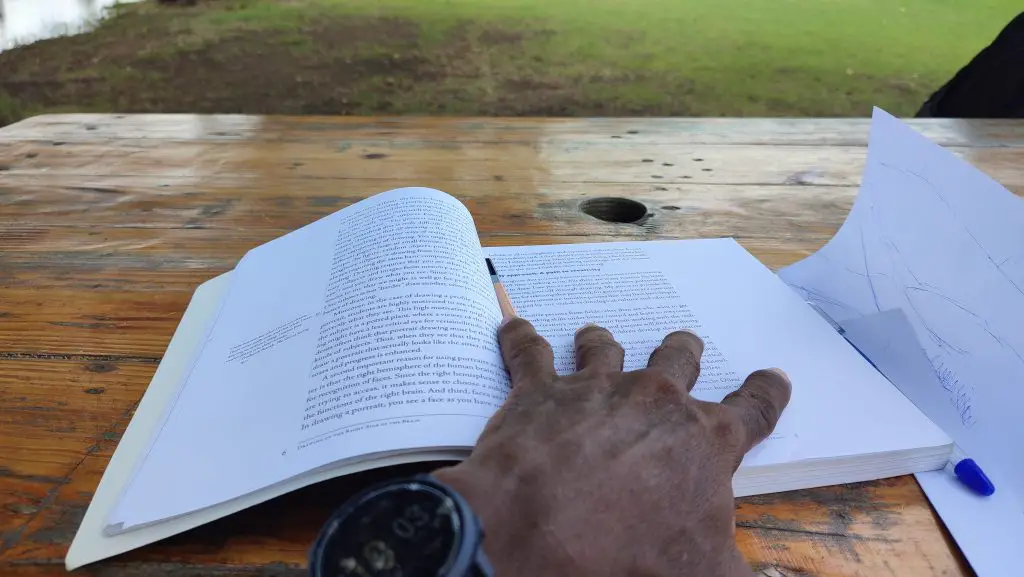Drawing on the Right Side of the Brain

As a tutor passionate about art and creative expression, I frequently encounter students who are hesitant to explore their artistic capabilities.
Many believe that drawing is a skill reserved for the “talented” few, but I’m here to dismantle that myth.
One of the most transformative resources I’ve come across is Betty Edwards’ seminal book, “Drawing on the Right Side of the Brain.”
This book doesn’t just teach drawing techniques; it opens the door to a world of creative potential, making it a vital text for anyone looking to enhance their artistic skills—whether a beginner or a seasoned artist looking to break through creative blocks.
🗒️ Key Takeaways
- Understanding Brain Functions: Edwards highlights the distinct roles of the left and right brain, showing that drawing is more about activating the creative, perceptive right side rather than relying solely on the structured left side.
- Reframing Perception: The book emphasizes “seeing” differently, encouraging exercises that train the brain to focus on shapes, angles, and spatial relationships rather than preconceived notions.
- Building Artistic Confidence: Edwards provides exercises that help students celebrate progress, fostering confidence by focusing on the process rather than perfection.
- Creativity Beyond Art: The principles extend beyond drawing, encouraging readers to apply right-brain thinking to other areas of life, enhancing problem-solving, observation skills, and overall creativity.
Table of Contents
Understanding the Right and Left Brain Concept

At the heart of Edwards’ teachings is the fascinating concept of the left versus right brain functions.
Often, we hear terms like “right-brained” to describe people who are thought to be more creative, intuitive, and holistic.
In contrast, “left-brained” individuals are typically characterized as analytical, logical, and methodical.
Understanding these differences is crucial because Edwards argues that drawing involves activating the right side of the brain, which is responsible for visual skills, perception, and creativity.
As a tutor, I have witnessed firsthand the limits to which students confine themselves when they rely solely on left-brained thinking.
Many approach drawing with a mindset focused on structure, rules, and measurements—elements that certainly have their place in art, but can stifle creativity if used exclusively.
Edwards’ book encourages readers to let go of such rigid thinking, freeing them to tap into their innate artistic abilities.
Reframing Perception: Seeing Like an Artist
One of the primary messages of “Drawing on the Right Side of the Brain” is the importance of ‘seeing’ differently.
For students who struggle with drawing, it often comes down to a misunderstanding of visual perception.
Edwards introduces exercises that shift how we perceive objects and scenes, emphasizing the importance of observation.

For example, one of the key exercises involves drawing an object upside down.
This method effectively tricks the brain into relying less on preconceived notions of the form and instead urges the right hemisphere to focus on shapes, angles, and spatial relationships.
I encourage my students to engage in these exercises as a means to improve their drawing and as a comprehensive way of looking at the world.
When students learn to ‘see’ like artists, they become more aware and intentional in all their creative endeavors.
Cultivating Artistic Confidence
A significant barrier many students face is a lack of confidence in their artistic abilities.
Edwards addresses this concern head-on by incorporating exercises that celebrate progress rather than perfection.
Many drawings from students may not resemble the intended picture at first, leading to frustration.
However, through the principles laid out in this book, I guide them to understand that each drawing is a step in their artistic journey.
Edwards emphasizes the importance of practice and provides activities that break complex subjects into manageable parts.
By dissecting the drawing process, students can practice specific skills before putting them together.
It’s akin to learning a musical instrument; you wouldn’t expect to play Beethoven’s sonatas right away, but through steady practice, you work your way there.
The simple act of drawing can become a profound exercise in self-expression.
Edwards encourages students to embrace the process, which I’ve seen work wonders in boosting their confidence.
As they progress, they become comfortable exploring their unique styles, which is where the magic truly happens.
Emphasizing Creativity Beyond Drawing

Though “Drawing on the Right Side of the Brain” is fundamentally a guide to drawing, its principles extend far beyond mere pencil strokes on paper.
By activating the right hemisphere, students discover creative thinking skills applicable to other areas of life—whether in problem-solving, communication, or even their academic studies.
Edwards illustrates how drawing sharpens observation skills—a vital component in various fields, including design, architecture, and even scientific endeavors.
When students begin to engage with their environment more thoughtfully, they unlock a new level of creativity in all aspects of their lives.
As a tutor, I encourage them to apply the techniques learned in the book to their overall approach to learning and creativity.
It becomes not just about drawing but about fostering a mindset that encourages imagination and innovative thinking.
A Holistic Approach to Learning
Another essential insight from Edwards’ book is its holistic approach to learning.
The author not only provides technical instruction but also nurtures the emotional and psychological attributes behind creativity.
Many students face mental blocks, whether due to fear of criticism, self-doubt, or perfectionism.
Edwards’ compassionate approach reminds us that the creative journey is as important as the final product.
Incorporating mindfulness into the drawing practice helps students connect with their emotions, leading to a deeper understanding of their artistic intentions.
Edwards encourages journaling and reflection alongside drawing, fostering self-awareness and emotional expression.
This dual approach has proven effective in my tutoring sessions, where I’ve observed students opening up about their fears and aspirations through the lens of art.
Why You Should Read Drawing on the Right Side of the Brain
In conclusion, “Drawing on the Right Side of the Brain” is more than just a book about drawing; it’s an invaluable resource for anyone seeking to unleash their creative potential.
I wholeheartedly recommend this book to my students and to anyone who feels an inclination toward art, regardless of background or experience level.
Betty Edwards’ insights have not only transformed countless artists but have also enriched the teaching practices of educators like myself.
Readers are equipped with the tools necessary to cultivate their unique artistic voices by understanding the brain’s dynamics, reframing perception, boosting confidence, and embracing creativity in its many forms.
This journey will enrich not only one’s drawing practice but also the way one engages with the world.
So pick up this book, open your mind to its teachings, and embark on an exciting journey of self-discovery through art!



Leave a Reply